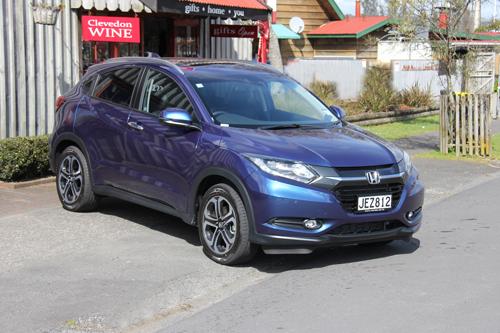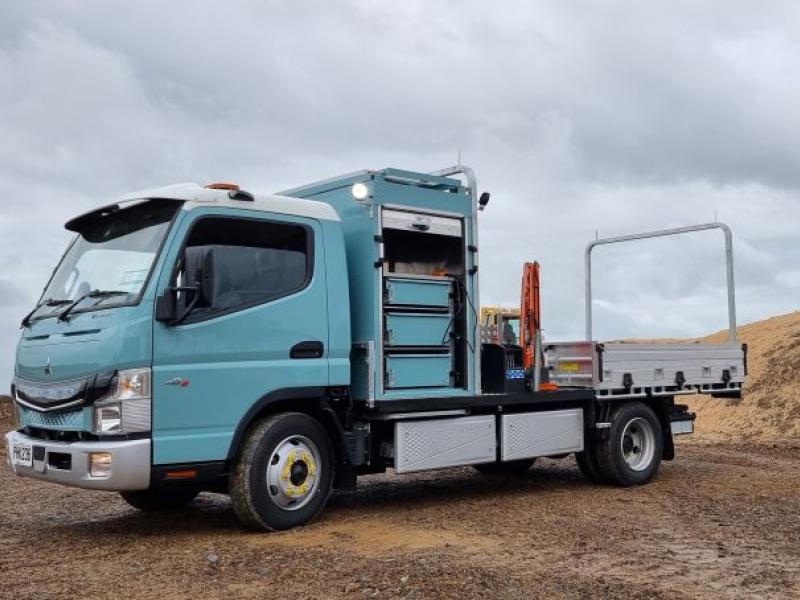The first Honda HR-V made a brief appearance around the world, and then left. John Oxley explains why – and looks at the brand-new version.
To be quite honest, the original Honda HR-V was before its time. Back in 1999, when it was first launched in Japan and selective other markets, including New Zealand, the motoring public was still locked into the idea of an SUV as big and bold and brash, and the idea of a neat and compact boxy SUV was just not on their radar.
However, as in all things in life, times change, and the compact SUV is now a hot property, helping grow the total SUV market to be the biggest market segment in New Zealand.
So it’s no surprise that there’s a new HR-V, based on the Honda Jazz platform (and including the Jazz’s famed “magic seats”), but with stylish bodywork that gives a high eye-point and a refined but tough look.
There’s also something of a coupe look to it à la 6 Series BMW, with swoopy rear styling, plus a hidden rear door handle first used by Alfa Romeo on the 156 to make it look more like a three-door than a four-door.
Add in a bold front end with a big chromed “wing” across the grille, and it all comes off rather well, making this one of the best-looking small SUVs on the market.
There are six models in the line-up, all powered by a 105kW/172Nm 1.8-litre i-VTEC petrol engine, coupled with Honda’s Earth Dream Technology CVT gearbox, driving through the front wheels. In line with most compact SUVs these days, 4WD is not available on the HR-V.
The 4.3-metre long HR-V offers space for five, with good headroom, legroom, and shoulder room for this class of vehicle, and as mentioned, has the versatility of Honda’s flip-up “magic seats” which can be adjusted in three modes depending on what you want to carry.
This includes tall fat objects, wide objects, and with the front seat back folded down, even objects measuring up to 2,445mm long! While we’re on the subject, the “boot” area has a capacity of 437 litres with the rear seats upright, increasing to 1,462 litres to the roof line with the rear seats folded down. Access is via a wide tailgate opening (1,180mm) and low loading height (650mm).
And if you really want to carry something even longer, you can always open the 846mm Panoramic glass sunroof that comes standard on the Sport models!
The six models in the range are as follows:
HR-V S $32,900
HR-V X $34,200
HR-V L $35,900
HR-V Sport $39,900
HR-V Sport X $41,200
HR-V Sport + $43,900
For the “train spotters” among you, here’s how you identify them.
The S comes with 16 inch alloy wheels, a tailgate spoiler, halogen headlamps with DRLs, cruise control, digital climate control, six-speaker audio with a seven-inch touchscreen, Bluetooth, three-angle reversing camera, adaptive electric power steering, electric parking brake, and a stability programme.
Navigation can be included, but this is via a downloadable app. which only works with an iPhone 6 and above. This applies to the whole range.
Moving up to the X, this adds a front skid plate, side running boards, and a rear skid plate, while the L gets leather seats, a chrome aero grille, chrome lower door garnish and stainless steel door sill and cargo step protectors.
The Sport gets 17 inch wheels, a LaneWatch camera, Panoramic roof (with tilt and slide), City Brake Assist, which will stop the car from 5-32km/h to prevent a crash. It also gets a smart key, front fog lamps, parking sensors front and rear, rain sensing wipers, roof rails, steering wheel paddles, leather seats, the front ones heated, electric folding mirrors with auto reverse tilt, auto windows with remote operation via the fob, three 12V power outlets, dual climate control, a rear seat centre armrest, and more chrome trim.
The Sport X adds front skid plate, side running boards, and rear skid plate, while the top-of-the-range Sport + has an aero front bumper, aero satin silver side skirts, rear aero bumper, 18 inch Modulo Sport + alloys, and wider tyres.
A quick dash out into the country showed the car handles extremely well, with lots of grunt from that 1.8-litre engine, and an acceptable CVT offering, Honda, like many manufacturers these days, having muted the high-pitched whine effect and given it better response.
In line with what we’ve come to expect from Honda, fit and finish levels were high, with soft-touch surfaces on the interior a refreshing change in this segment.






